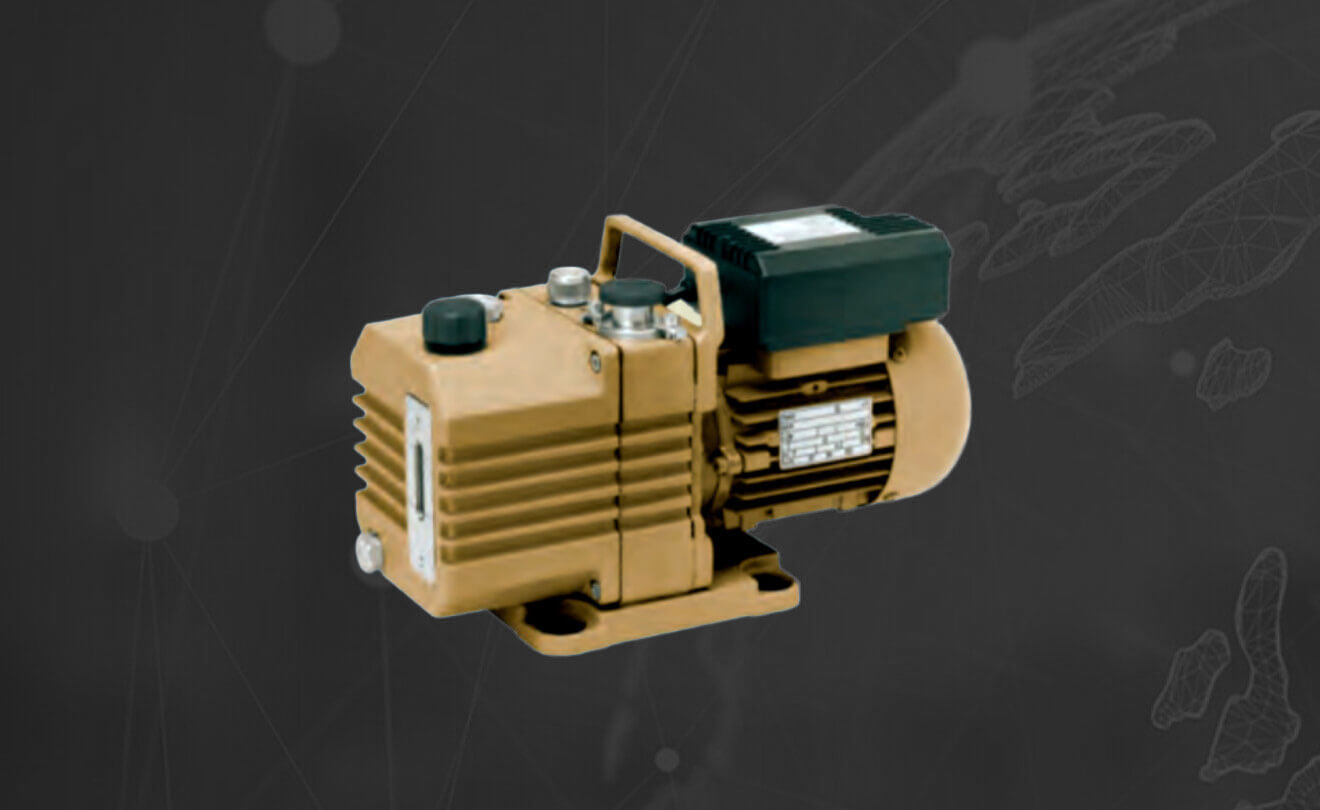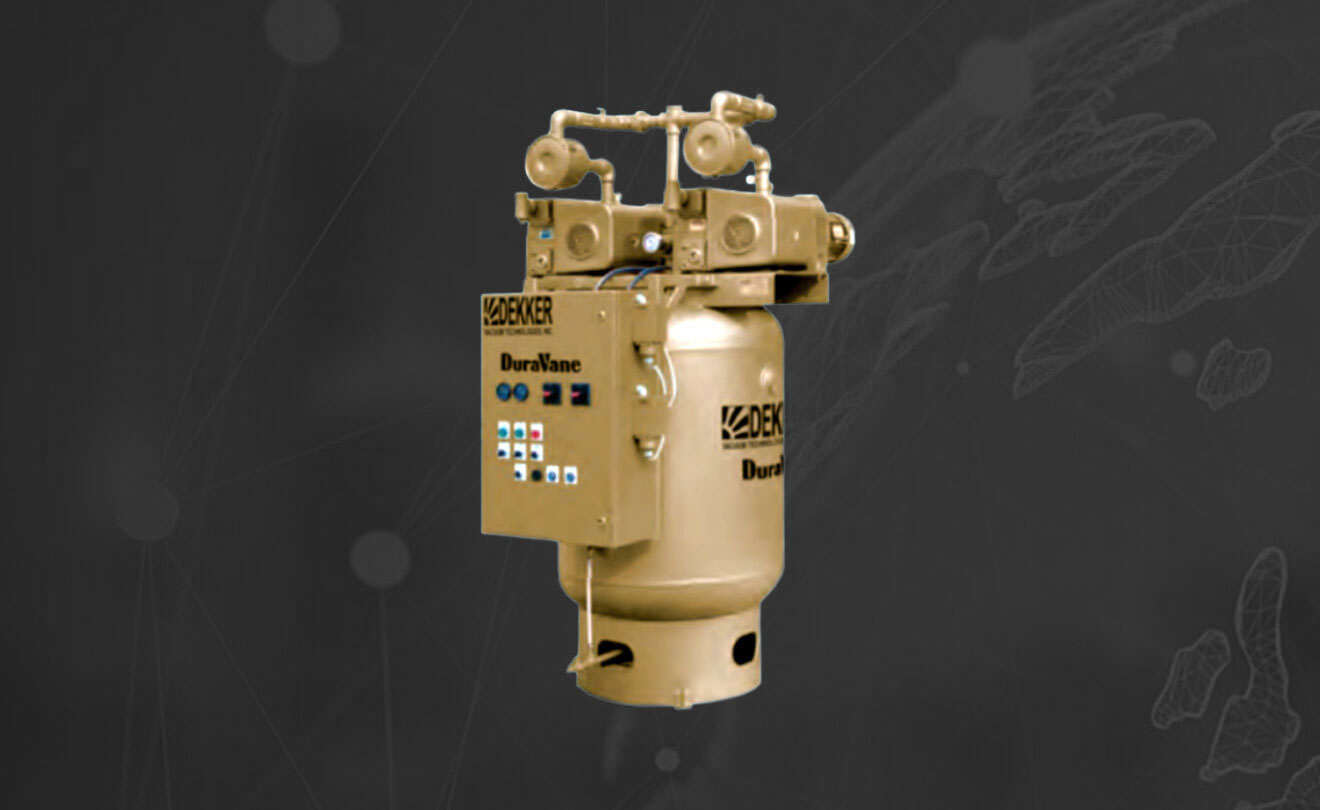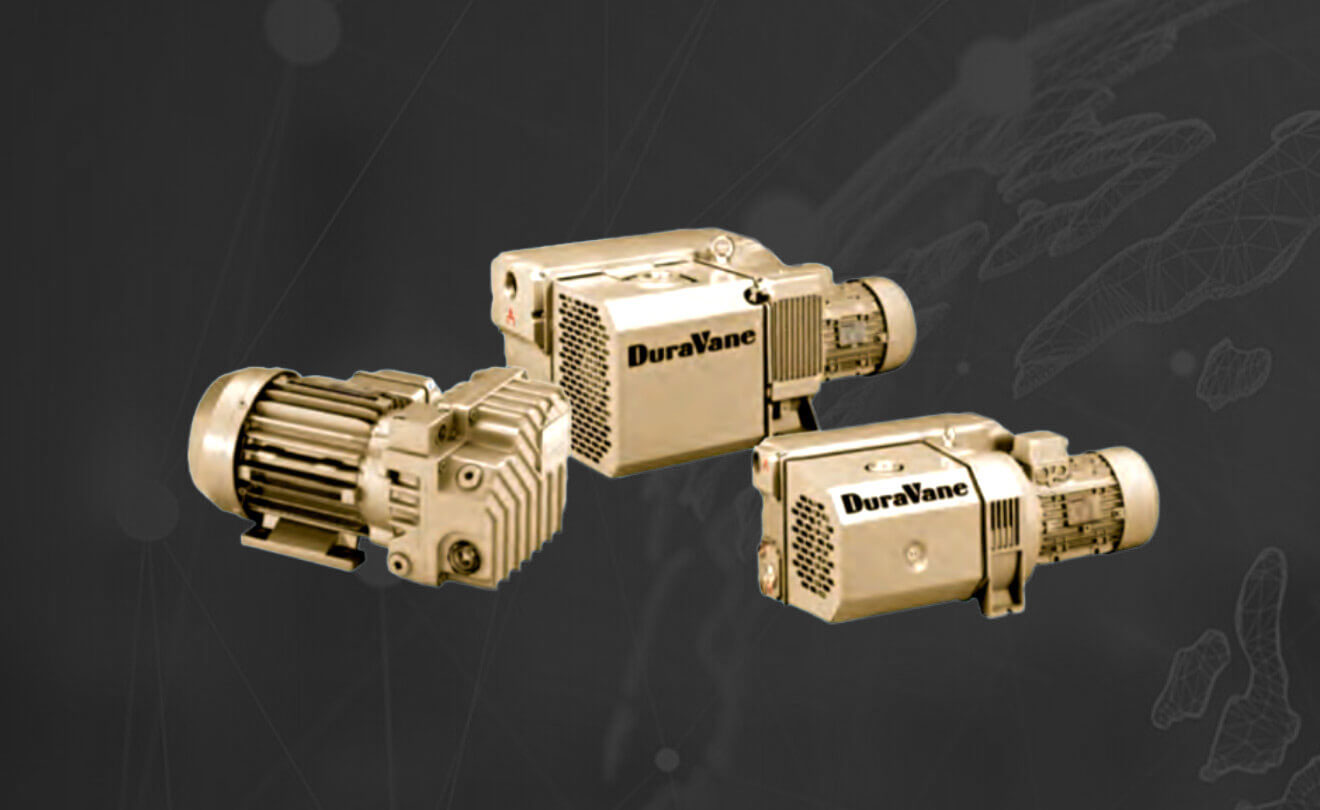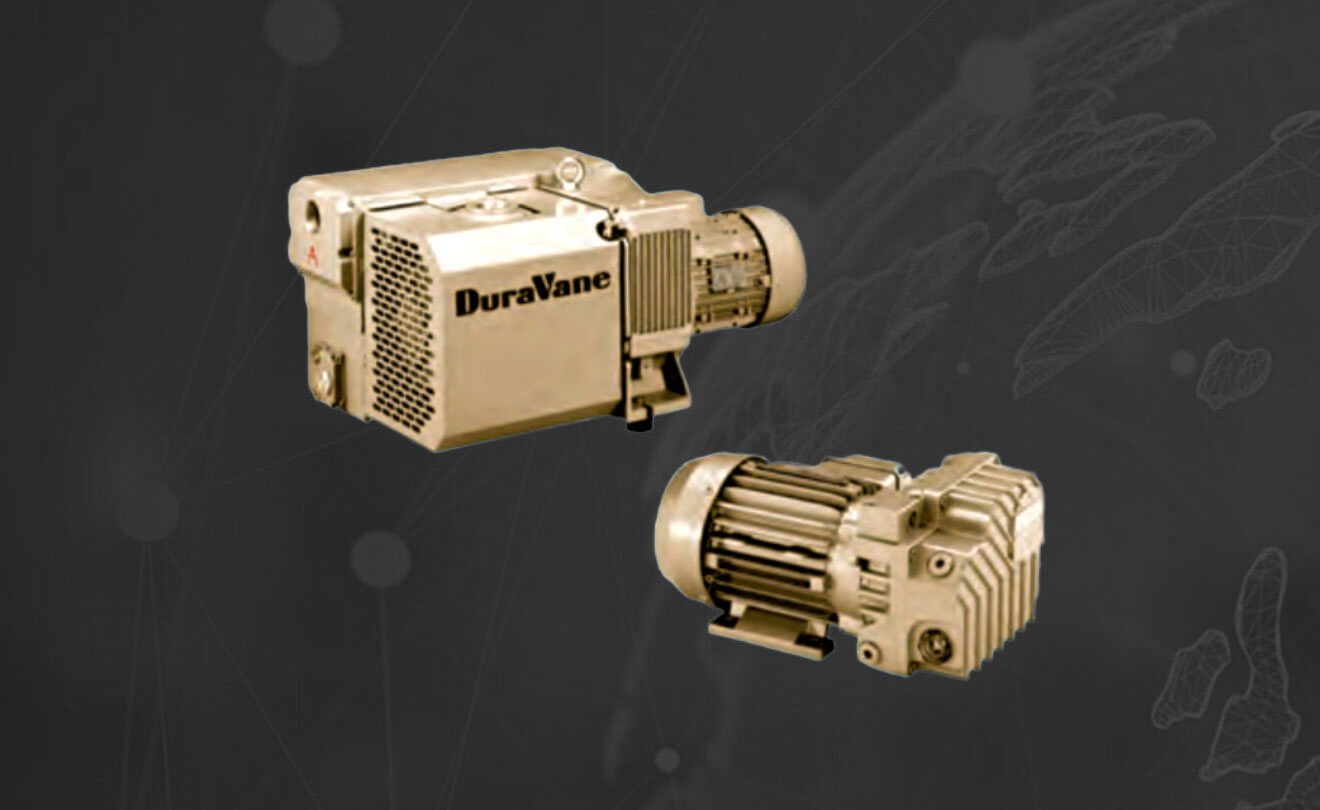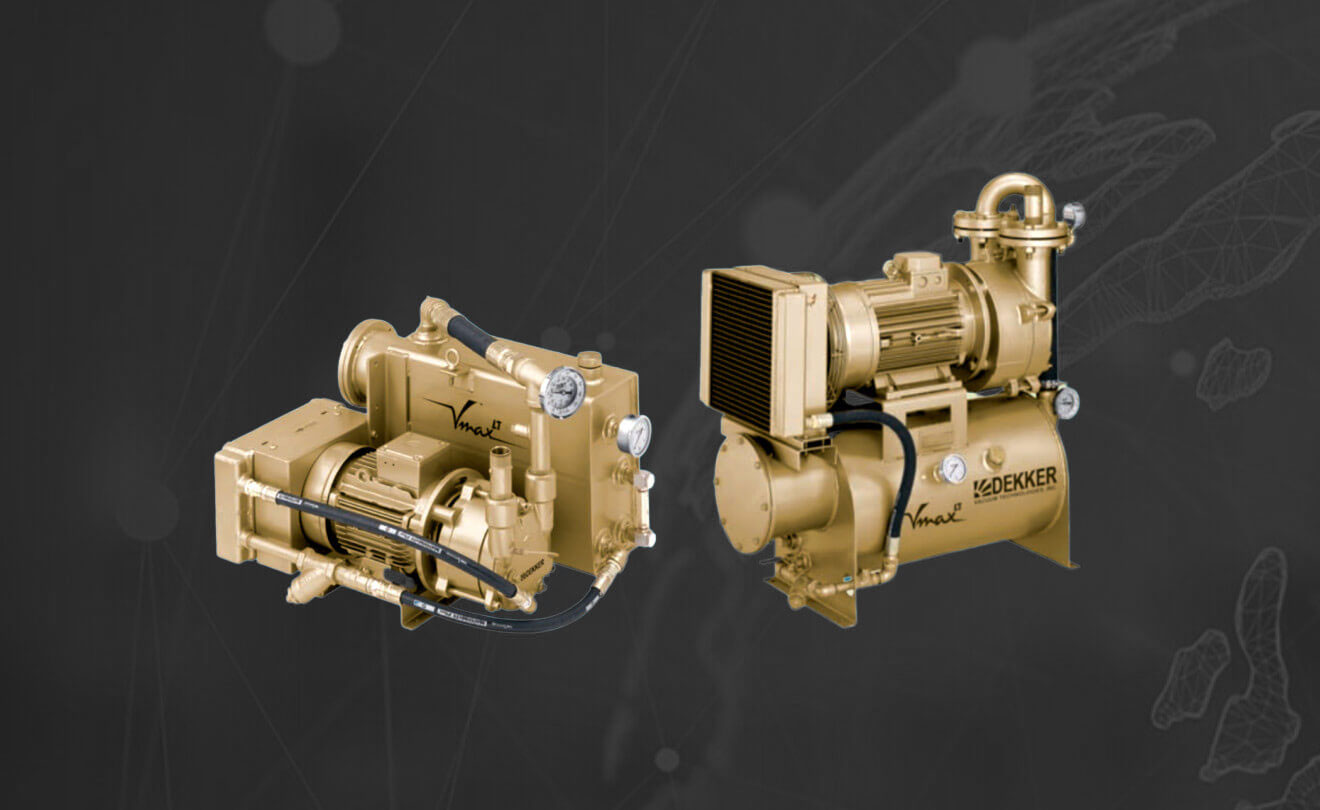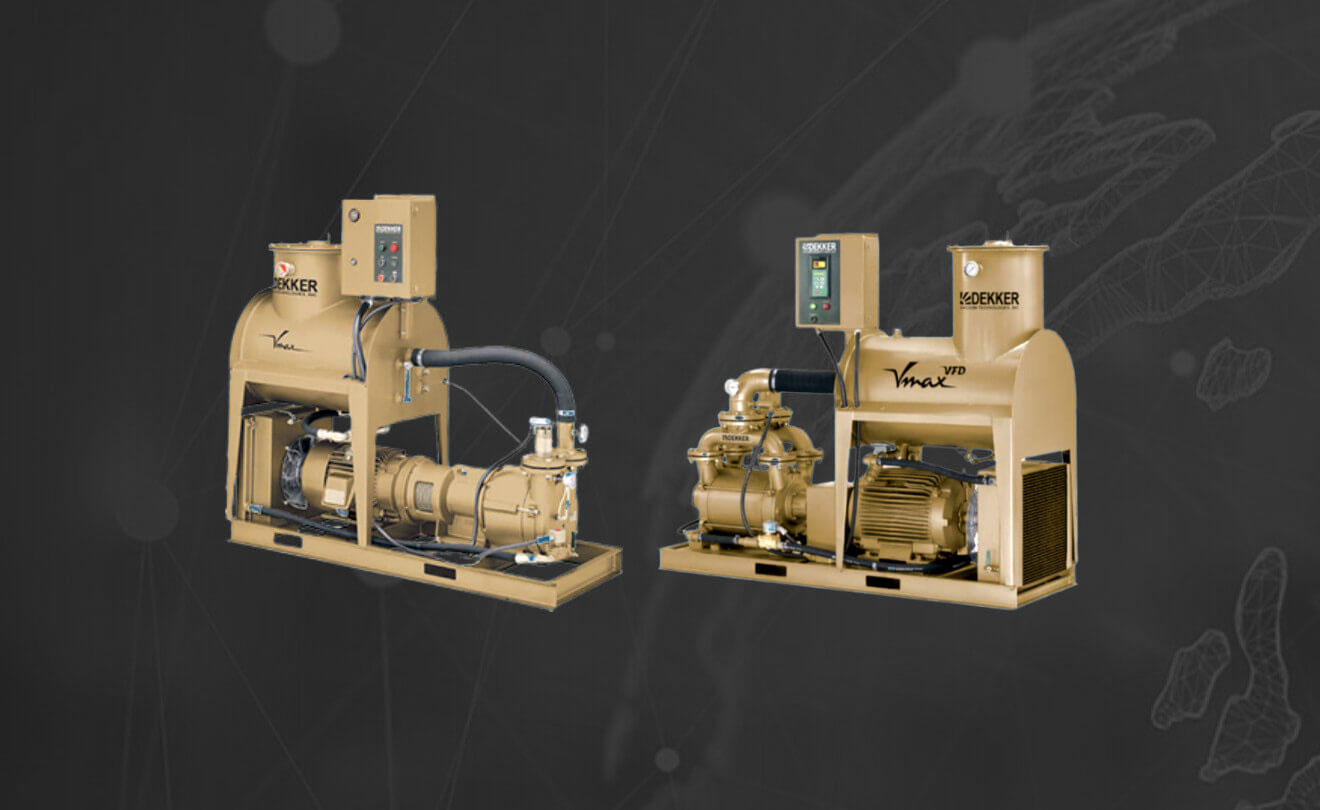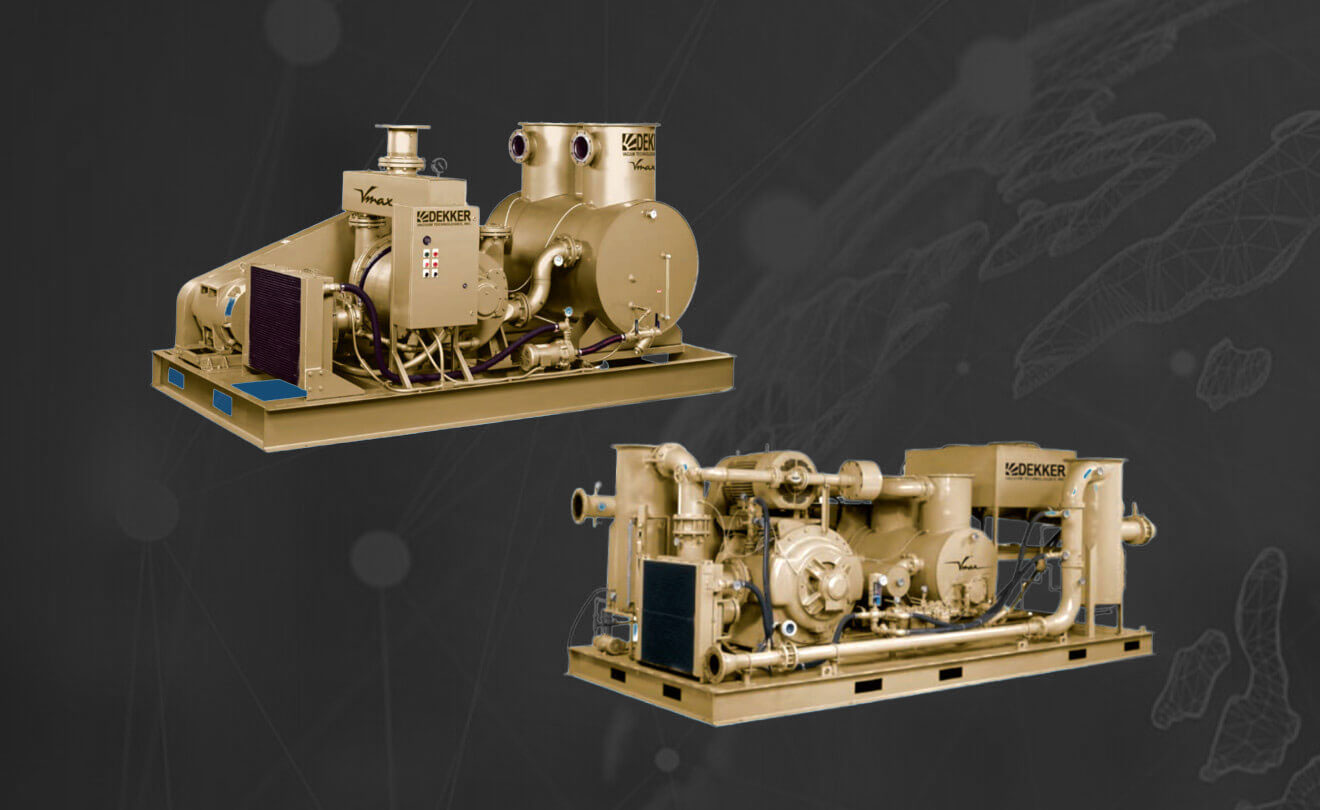Pattons offers Dekker industrial vacuum pumps and systems in USA for a wide-array of industries including Power Generation, Chemical Processing, Plastic Manufacturing, Food Processing, Pulp & Paper and more. The Dekker name has been recognized as an innovator in oil sealed liquid ring vacuum pump technology as far back as the 1970’s. Dekker Vacuum Technologies, established in 1998, has continued to build on that reputation to cover all aspects of vacuum pump systems. The company’s wide range of industrial vacuum pumps and systems available in a variety of materials. Dekker’s mastery in the vacuum field has produced some of the most durable, reliable industrial vacuum pumps in the world.
DuraVane RVH series high vacuum lubricated rotary vane vacuum pumps feature a compact design with very quiet operation. Typical applications include laboratories and other high vacuum requirements.
View ProductThese vacuum pumps for wet service are specifically developed for applications with high inlet water vapor content such as stone and glass cutting.
DuraVane lubricated rotary vane vacuum pumps: single-stage pumps with an integrated oil-recirculation system, used in a variety of industries such as vacuum packing, lifting, laboratories, hospitals, etc.
View ProductDuraVane oil-free rotary vane vacuum pumps are direct drive, low noise level, heavy duty compact motor-mounted units that are extremely reliable for many industrial applications. The pump can also operate as a low pressure compressor.
View ProductDekker Vmax systems are high-efficiency single-stage liquid ring vacuum pump manufactured to ISO9001 quality control standards offering excellent reliability in many industrial applications.
View ProductVmax Oil Sealed Liquid Ring Vacuum Systems: rugged, direct drive, low maintenence, high quality & compact designed industrial vacuum pump systems offering years of trouble free operation with a full 3-year warranty.
The VmaxMTH systems are air cooled and are particularly suitable to operate as a vacuum compressor that will not overheat. These systems have a proven track record in the coal bed methane gas recovery industry.
View Product